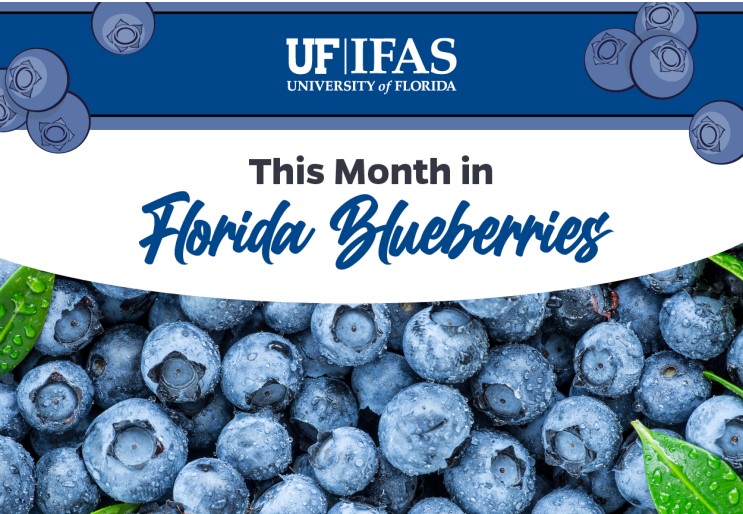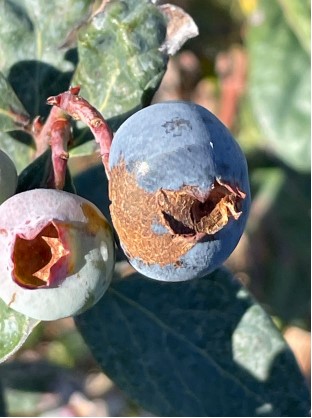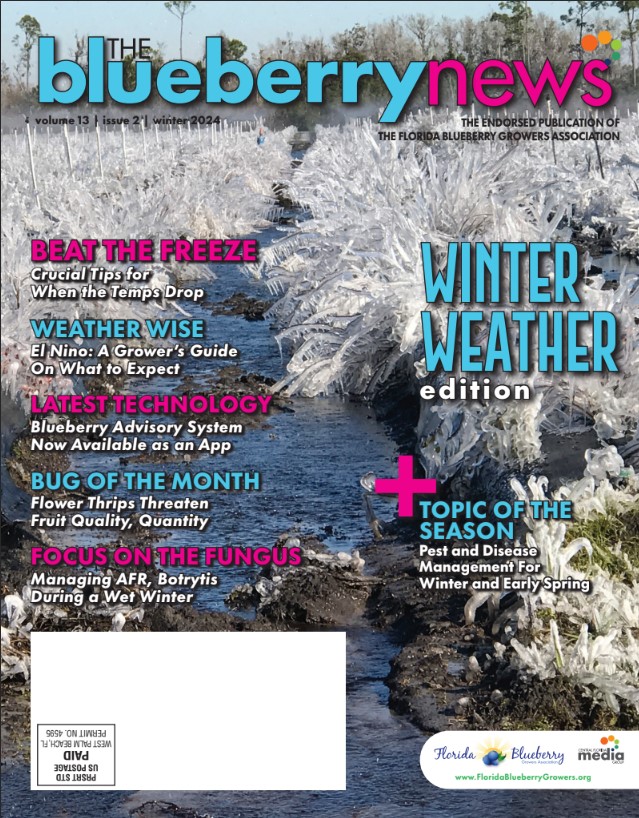
The table below lists suggested blueberry management items for February. Suggested management items
for the entire calendar year are available in an EDIS publication, Calendar for Southern Highbush Blueberry
Management in Florida (https://edis.ifas.ufl.edu/publication/HS1363). Specific disease, insect, and weed
controls are listed in the 2022 Florida Blueberry IPM Guide (https://edis.ifas.ufl.edu/publication/HS380), as
well as in subject-specific publications referenced below. Also, a list of all UF EDIS blueberry publications
can be found at www.blueberrybreeding.com/blog, along with a summary description and link to each.
Remember to take a look at the UF/IFAS Blueberry Growers Guide phone app for field scouting tools, as
well as information on all of the UF southern highbush blueberry cultivars. It is available for download at
https://tosto.re/blueberryuf.
BLUEBERRY MANAGEMENT
Disease
Monitor for Botrytis and control as needed. Applications of fungicides prior to a forecasted need for
overhead irrigation as freeze protection can help reduce Botrytis severity on plants damaged by low
temperature injury. See UF EDIS Publication PP198, Botrytis Blossom Blight of Southern Highbush
Blueberry (https://edis.ifas.ufl.edu/publication/PP119). Apply suggested fungicides in rotation for control
of anthracnose and/or Alternaria fruit rot at petal fall, 10-14 days after petal fall, 20-24 days after petal fall,
and prior to harvest. One tool growers may consider in timing spray applications is the Blueberry Advisory
System (BAS) at www.agroclimate.org/BAS, which indicates when weather conditions are favorable for the
development of anthracnose fruit rot.
Insect Pests
Continue to monitor for blueberry gall midge and spray suggested insecticides when adults are observed. If
traps are not used, spray before floral and vegetative bud break, with a second spray approximately 7-10
days after the first application, following label directions. See UF EDIS Publication ENY-997, Blueberry Gall
Midge on Southern Highbush Blueberry in Florida (https://edis.ifas.ufl.edu/publication/IN1239). Also scout
for flower thrips and blueberry bud mites, and if observed use applicable control measures. See UF EDIS
Publication HS1156, 2022 Florida Blueberry Integrated Pest Management Guide
(https://edis.ifas.ufl.edu/publication/HS380) for detailed recommendations.
Weeds
Apply post-emergence herbicide if weeds are at densities that hinder bush growth.
Freeze Protection
Monitor forecasted and actual temperatures and utilize freeze protection strategies as needed. See UF EDIS
publication HS968, Protecting Blueberries from Freezes in Florida
(https://edis.ifas.ufl.edu/publication/HS216).
Managed Bees
Monitor health of colonies and watch for appropriate level of bee activity into and out of the hives and on
the blueberry bushes. Consider adding additional hives if there is a heavy, concentrated bloom across the
farm, competing crops or wild plants nearby blooming at the same time, or ongoing poor weather
conditions (cold, windy, or overcast). See additional details in EDIS Publication ENY-172, Pollination Best
Practices in Southern Highbush Blueberry in Florida (https://edis.ifas.ufl.edu/publication/IN1237).
This Month's Blog Post

Flower Thrips Management in Florida
Upcoming Events:
FBGA Spring Field Day





